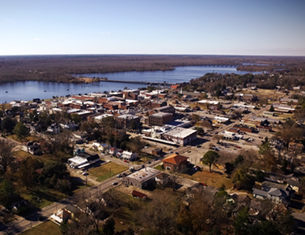Publisher's note: The author of this post is Michael Lowrey, who is a contributor for the Carolina Journal, John Hood Publisher.
RALEIGH At least half of North Carolina, primarily rural, seems to be in decline. That's the dramatic conclusion you'll sometimes hear drawn from the latest Census Bureau county-level population estimates. Such prognostications misstate and oversimplify the issue.
With the July 2015 population numbers, North Carolina crossed the 10-million-resident threshold. Since the 2010 census, the state's population is estimated to have grown each year by about 1 percent, or by roughly 100,000 residents.
This growth isn't spread out equally across the state, as nearly half of the state's counties - 49 of 100 - are projected to have lost population since 2010.
Population growth can be a reflection of economic vibrancy. And certainly Mecklenburg and Wake counties have that, with each adding more than 110,000 residents since 2010. (By comparison, 74 N.C. counties had fewer than 110,000 total residents in 2015.)
The counties around Charlotte and Raleigh are adding people as well, as is the Wilmington area. The Triad and Asheville area also are growing, though not as fast.
When you get beyond those areas, things get hit and miss, though the pattern isn't a simple urban/rural divide. For one thing, there's no single definition of "rural." The Census Bureau, the U.S. Office of Management and Budget, and the N.C. Rural Center all define the term differently.
According to the Rural Center's usage, the county that's gaining population at the fastest percentage rate, even faster than Wake or Mecklenburg - Brunswick - is actually a "rural" county. Does Brunswick represent a viable, transferable model for rural economic development?
Almost certainly not. The OMB places Brunswick in the Myrtle Beach metropolitan statistical area, though North Carolina officials contend it should be in the same MSA as fast-growing Wilmington and New Hanover and Pender counties, which are adjacent to Brunswick County.
Either way, Brunswick isn't quite so rural, and the combination of the beach plus nearby growing cities proves very attractive.
Even where counties are losing population, the situation is more often one of stagnation than a Detroit-like population exodus. Robeson County, for example, has the third-lowest per-capita personnel income in the state and is relatively large, with a population exceeding 134,000. Despite that, the county's population is estimated to have dropped by 184 residents between 2010 and 2015.
It's a trend that's repeated often across the state. The 49 counties that shrank lost an estimated 37,486 people total between 2010 and 2015. Their remaining population is projected at 1,969,152.
Only 11 counties saw population drops of 3 percent or more between 2010 and 2015. Those counties also had small populations to begin with; their combined population is only 281,471.
The four counties with the largest percentage population drops - Gates (6.0 percent), Northampton (7.1 percent), Tyrrell (7.8 percent), and Washington (5.9 percent) - had a combined population of less than 50,000 in 2015.
North Carolina even has its own version of a struggling city. Rocky Mount straddles the Nash/Edgecombe county line with a population of over 55,000. It's losing population - as are both Nash and Edgecombe counties.
The situation also provides another example of the conflicting meanings of "rural"; the Rural Center defines both counties as rural while the OMB says they comprise the Rocky Mount MSA.
Of course, there are places that are hurting. It's just that every community is different, and lumping all of them together into a single narrative misstates the issues and suggests that one-size-fits-all solutions exists.
When it comes to economic development in rural North Carolina - however you choose to define what "rural" is - there often are no such simple answers.

























